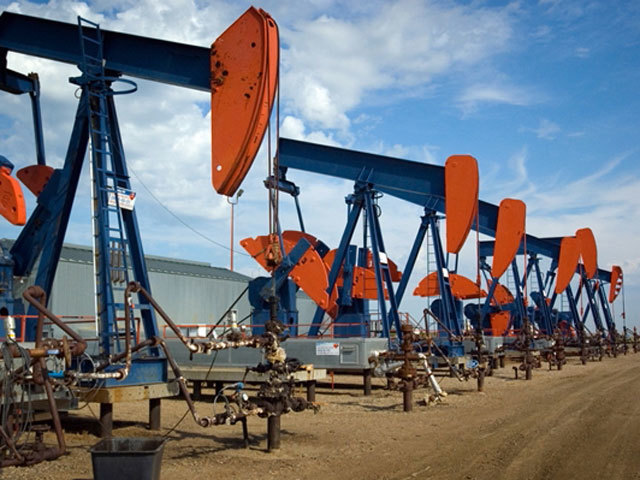
Oil at $35 a barrel is neither too high nor too low but just right to make shares of US explorers worth buying, according to Goldman Sachs.
While prices of crude at that level are above cash costs of production, they will deter a rebound in shale output from occurring too early, the bank’s New York-based analysts including Brian Singer said in a report.
Oil at $30 to $35 a barrel should keep the behavior of US companies unchanged and help lift West Texas Intermediate to $55 to $60 a barrel in 2017, according to Goldman.
“We view our second-quarter 2016 oil outlook as an idealistic Goldilocks scenario,” the analysts wrote in the report. “We would use volatility to add to positions of shale productivity winners and the next rung down.”
Goldman said it favors US producers EOG Resources, Diamondback Energy and PDC Energy as well as stocks in “the next rung down” – Hess Corp., Cenovus, Anadarko, Encana, Continental Resources and Whiting Petroleum.. While the bank predicts WTI crude prices will average $35 a barrel in the second quarter, it forecasts $38 for 2016 and $57.50 for next year.
After an American shale boom triggered a crash in prices from more than $100 a barrel in mid-2014, the number of rigs drilling for oil in the U.S. has dropped to the lowest level since 2009 as producers tackle the fallout from a global oversupply.
Crude has rebounded since mid-February amid speculation that members of the Organization of Petroleum Exporting Countries and producers outside the group would forge a deal to freeze output and shrink the glut.
Goldman has “been less willing to believe in a sustained OPEC production freeze or cut,” according to the report. It expects the group’s output to increase by 600,000 barrels a day in 2016 and 500,000 barrels a day next year.
Saudi Arabia has said it will only freeze output if it’s joined by other suppliers including Iran, while Kuwait has signaled a deal doesn’t hinge on the Persian Gulf state. Iran, meanwhile, plans to boost production to 4 million barrels a day by the end March 2017, according to the nation’s Shana news service, which cited Oil Minister Bijan Namdar Zanganeh.
US production may drop by 725,000 barrels a day in 2016, implying a monthly reduction of 85,000 barrels a day for the rest of the year, according to Goldman.
Daily output was at 9 million barrels as of early April, data from the Energy Information Administration show.
“Our view on a path to a 2017 oil price recovery is contingent on a decline in U.S. oil production needed to rebalance the global market,” the Goldman analysts wrote in the report.
WTI futures traded 0.2 percent lower at $37.66 a barrel on the New York Mercantile Exchange by 11:21 a.m. London time. Front-month prices are up almost 2 percent in 2016.
Recommended for you
